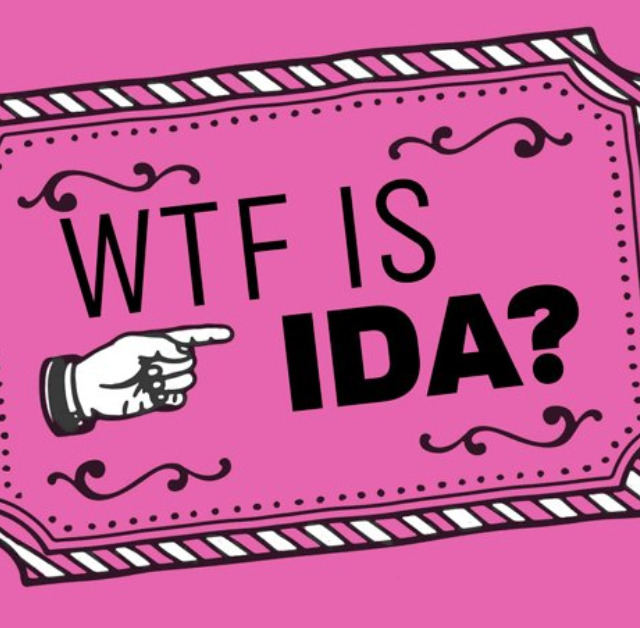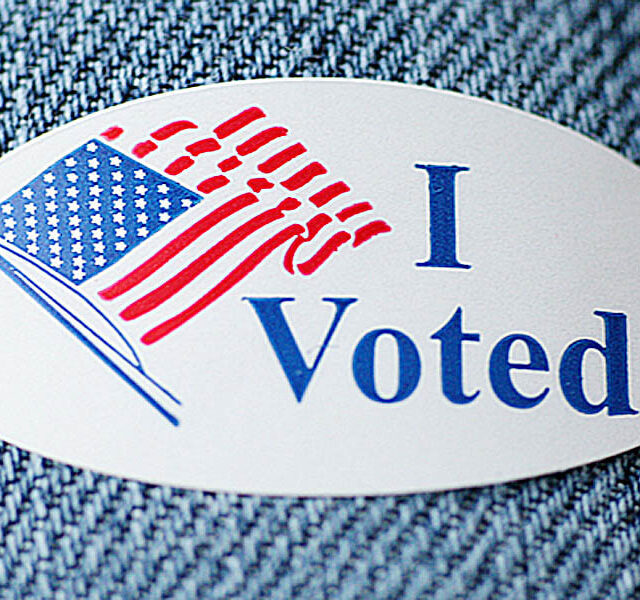Story and photos by Rebecca Rwakabukoza.
While schools in Uganda are increasingly expanding to attract more learners, expansion often means buildings with classrooms only accessible by stairways, keeping out any students that may be differently abled. Very few schools have Braille materials or have teachers who know sign language. The education system there – much like the rest of the world – is best suited for a person without any difference in ability.
Despite Uganda’s Persons with Disabilities Act (2006), which encourages inclusive education, there is little progress to ensure access to education for children with disabilities. In Uganda, a person with a disability is sometimes called “kateyamba”: one who cannot help oneself.
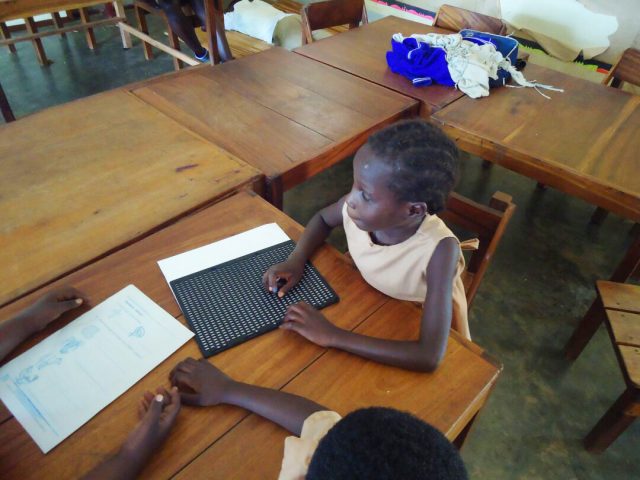
A student learns braille in one of the Cheshire schools.
Cheshire Services Uganda began in 1994 and supplements the work of residential centers with field programs. The organization has been able to support students in about 12 districts across Uganda.
“In Amolatar, we are working with 500 boys and girls. In Moyo, 800 adolescents are supported in vocational training,” says Richard Mukaga, Cheshire Services Uganda’s head of programs.
The biggest project under this program is the Girls’ Education Project, which focuses solely on girls in primary school. They now work with over 100 schools and support 2,024 girls with disabilities.
“We were challenged with the fact that a disabled child might not have to travel a long distance to get to school,” says Mukaga. “So we suggested we work with community schools that are near these children, so that even when we are not supporting them with transport, parents can take them to school or some of them can walk.”
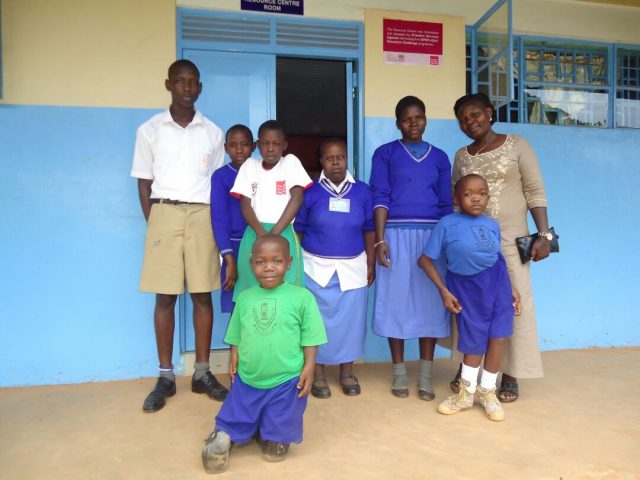
Students at the Kyambogo Primary School.
The aim of the program is to increase enrollment of girls with disabilities by reducing the barriers to education. This has meant provision of wheelchairs for those who cannot walk, a school bus with a ramp, school tuition, educational materials, teacher training, and building resource centers in schools.
The focus on girls is critical because their vulnerability is amplified by their disability. “Our inspiration is to support the most vulnerable,” says Mukaga. “Sometimes we talk about poverty as a situation that can put a person in a very vulnerable situation. But when you talk about disability, it is more than that. In most cases, disability causes poverty and makes the situation even worse.”
Each child is assessed for their specific need. If they need a wheelchair, they are given one. If they need crutches, the project provides. Tuition in a school nearby is paid, and a bus picks them up from home to school and back.
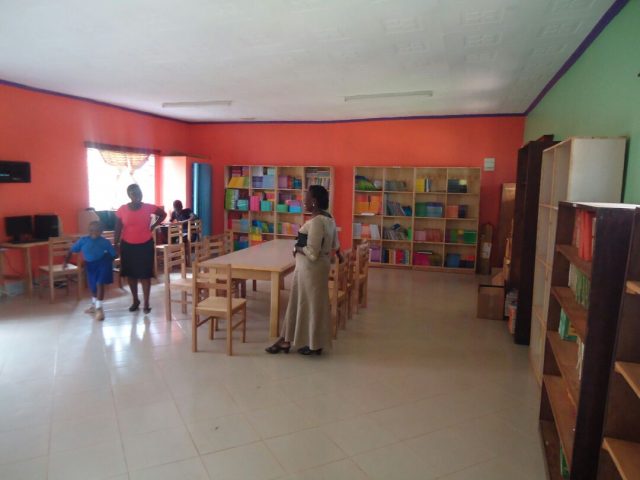
The resource center at Kyambogo Primary School.
Anna Kisa’s favorite sport is kwepena (a version of dodgeball), she loves mathematics and enjoys her time at Kyambogo Primary School, where she is treated as any other student in Primary Seven. Kisa has Down Syndrome and in other school settings, the 25-year-old might feel isolated from her peers. But now she’s in school and dreams of becoming a counsellor one day. “I want to advise people,” she says.
Despite this progress, not all schools are able to accommodate and teach students with disabilities yet. Nnatongo Noreen, the deputy headteacher at Uganda School for the Deaf, thinks inclusive education can work depending on the severity of impairment.
In an inclusive classroom, a teacher might be encouraged to speak while writing on the blackboard for children with different hearing abilities. “This will not work for a profoundly deaf child who was born without hearing,” she says. “For a profoundly deaf student, the mind is like a blank page and you need to teach them how to communicate. They’re not just acquiring subject knowledge; they are learning a new language.”
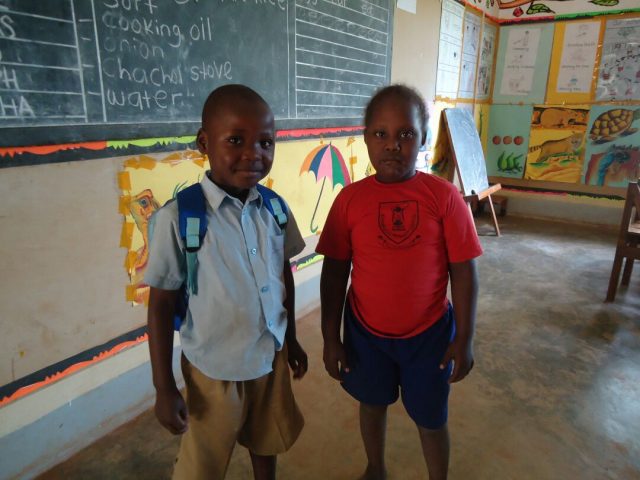
Ojwangi and Nicole, two friends in the Cheshire Services Uganda program.
The inclusive approach is expensive, but is also required by law in Uganda. Many schools – and institutions – provide what can be viewed as a violation of rights of children with disabilities because of poor implementation of policies. Those supported by Cheshire Services Uganda are not among them.
Just ask 12-year-old Lillian Abore, a young student with a visual impairment. She doesn’t require help walking, but she does avoid brightly lit places. Just a few adjustments help her thrive in the classroom: a few curtains in the resource center to keep out the light, and a teacher who understands why she needs to sit in a particular spot in the classroom. Staying in school can help give her a better chance at her dreams — she wants to be president of Uganda one day.

